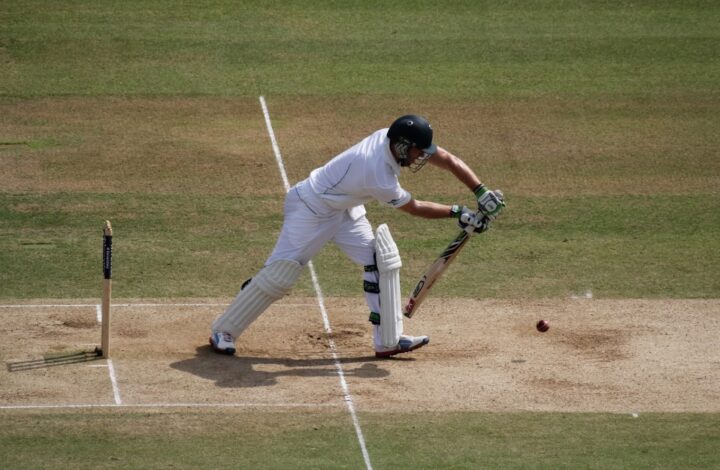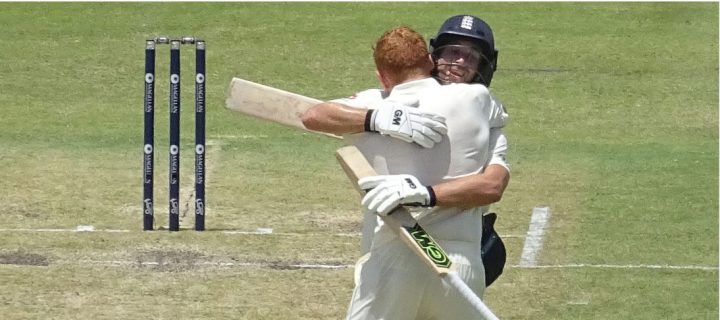He’s back. This month, over 1,200 days after his 27th test century, Virat Kohli scored his 28th against Australia at Ahmedabad. A comeback long awaited, Virat looked every bit the player that, for so long, had world cricket at his feet as he strolled to 186 off 364 balls.
By no means a flashy knock, Virat’s marathon innings was mostly devoid of the crisp drives and powerful pulls that, for so long, were his calling card. Instead, he churned out the singles and ignored any good balls. An exhausted Aussie attack tried all manner of tactics to tempt him into a rash shot but the right-hander wouldn’t budge. In the 139th over, he flicked a full Nathan Lyon delivery into the leg-side for a single, reaching the evasive milestone off 241 balls.
Despite the fanatical crowd’s roar, their idol opted against any lavish celebration. A nonchalant raise of bat and helmet, plus a warm smile, sufficed. It had been too long. This was no breakthrough innings but a return to normality – a restoration of the natural order. The natural order being Virat Kohli scoring runs, lots of runs.
His last test hundred came in November of 2019, an imperious 136 vs Bangladesh. Until then, the prodigal son of Indian cricket averaged a staggering 55.04 in test cricket. In the following three years, however, that number would plummet to the 48.93 it now stands at.
Now, an average of 48.93 is in no way bad, most would kill for such a statistic, but the six-run decrease illustrates just how out of form Kohli was in those three, long years. He averaged only 19.33 in 2020, 28.21 in 2021 and 26.50 in 2022 – unthinkable numbers for a player who’s outstanding batting record had been the envy of world cricket for almost a decade previously.
In between tons 27 and 28, Joe Root scored thirteen hundreds, Marnus Labuschagne scored nine, and even Zak Crawley scored three. Johnny Bairstow was dropped from the England test side, regained his place, was dropped again, regained his place again and smashed six centuries. There have been three British Prime Ministers, two American presidents, and one global pandemic.
What’s more, the drought wasn’t exclusive to test cricket. Kohli’s 27th test ton had been his 70th international hundred. Virat would have to wait another two years and nine months for number 71, as his white-ball form dwindled too.
The obvious question is why? What makes one of the greatest ever cricketers, in the peak of his powers, suddenly become so poor?
One popular hypothesis is that Virat simply plays too much cricket. Until November 2021, Kohli captained India in all three formats as well as the Royal Challengers Bangalore in the Indian Premier League. This meant that he played, and captained, a lot of cricket matches. In 2019, his last year of formidable form, Virat featured and took charge in eight tests, twenty-six ODIs, ten T20Is and fourteen IPL fixtures. Fifty-eight games played across seven countries in total.
The problem was exacerbated in 2020, when players were restricted to bio-secure bubbles because of COVID-19. Unable to leave the team hotel for weeks on end, the mental health of many-a-cricketer suffered. Some sides took precautions. England rested players religiously, ensuring that no batter or bowler would spend too long in an isolated team bubble. India took no such precaution. Kohli’s poor form began.
“He is overcooked by playing too much cricket”, claimed former India batter Wasim Jaffer in last May. Virat’s luckless run was nearing its third year now and the former great had been stripped of the captaincy, in all formats. “I would suggest that Kohli take a four-to-six-week break…and come back a mentally fresh player”.
And, take a break he did. Several actually. Learning from their past mistakes, the Indian management allowed Kohli to miss several minor ODI and T20 series following that year’s IPL. And, it worked. Sort of. Four months later, after a plentiful Asia Cup campaign, Kohli struck his first T20I century against Afghanistan. His wait for the elusive 71st international hundred was over, finally.
ODI tons would soon follow – three in the space of four matches. The third, his forty-sixth one-day century, was a masterclass in white-ball batting. Kohli’s 166* off 110 balls against Sri Lanka accounted for 42.56% of his team’s total and included eight monstrous sixes. After slamming Kasun Rajitha for six off the first ball of the 47th over, Kohli caressed a glorious drive over the seamer’s head from the third delivery. The ball sailed seventy-nine metres into the Kerala crowd. Kohli grinned. The king was back.
However, although his white-ball performances picked up, Virat’s test slump lingered. Of course, there’s been much criticism of Kohli’s technique in his barren three years. After nicking a number of deliveries in England and South Africa, his discipline outside off-stump was called into question.
Virat responded loudly. In the first innings of the third test against South Africa in 2022, when said criticism was at its peak, he struck 79 off 201 deliveries – an impressive score, certainly, but what was so noteworthy about the knock was the right-hander’s discipline outside the off stump. Kohli left 57.4% off the balls he faced outside off, the highest leave percentage against balls delivered outside off-stump in the previous five years.
Kohli had heard the criticism, adjusted his technique, and benefitted. He has been relatively untroubled by seam from this point onwards.
But then came his struggles against spin. Dom Bess, Ajaz Patel, Lasith Embuldinia all had the Indian on toast in their respective encounters. Frequently finding himself pinned LBW or bowled, Virat either went too far back or overextended to good length balls.
His form against spin plummeted. Although, granted, so did everyone’s. Which brings us onto perhaps the biggest factor behind Kohli’s loss of form: Indian pitches.
On the ninth of February 2020, England completed a historic victory, demolishing a star-studded India team by 221 runs. The pitch was expectedly flat and plenty of runs were scored. Joe Root hit a magnificent 218 in his hundredth test as England flipped the script on their hosts. For years, India’s home dominance had been built on their ability to bat long on flat wickets. Now, said dominance was threatened.
As the three lions cruised towards victory, then captain Kohli turned to Ollie Pope at the non-striker’s end and said, “this is the last of the flat wickets”. He wasn’t lying. The next three tests were over in a flash as Axar Patel and Ravichandran Ashwin spun England into oblivion. The Indian batters also struggled – Joe Root’s 5-8 in the third test is ample proof – but they struggled less than England. The series finished 3-1 and India never looked back.
The flat tracks were gone, and India’s dominance resumed, now carried by their masterful spinners. One must only glance at Ashwin’s record to see how much modern Indian tracks suit spin. In the recently concluded Border-Gavaskar trophy, he averaged 17.28 with the ball, 15.08 in the previous series against Sri Lanka, and 11.36 against New Zealand in the series before that.
Modern Indian pitches are designed to turn, big time. And, while this suits their bowlers tremendously, India’s batters are understandably struggling. It’s no coincidence that Rahane’s and Pujara’s numbers have also taken a dive. Batting in India has become a minefield. And, given that he must negotiate said minefield for half his innings, Kohli’s poor form is a lot more understandable. The former world no.1 went from playing half his cricket in very easy batting conditions, to playing half his test cricket in very difficult conditions.
For whatever reason, the Ahmedabad pitch in the final Test against Australia was different. It was flat – a dead Indian wicket for perhaps the first time in three years. Kohli capitalised and the long wait was over.
Although it was a marvellous knock in favourable conditions, whether he’s back for good remains to be seen. Virat’s yet to conquer the rank turners he bats on so regularly, and still plays a ludicrous, if somewhat reduced number of matches.
But for now, the monkey is off his back. A 28th test hundred to end his three-year wait. One can only hope that he’s able to keep up the good form and, in time, reclaim his throne as the undisputed king of test cricket.
Will Symonds









Always believe in any sport class is permanent. Everyone goes through dips and troughs, but the best always seem to find a way back. It’s not so much about talent at the top, as every one has a bundle of that, it’s more a matter of self belief. The more success you have the more that increases. All batsmen have their preferences and bogey bowlers, Boycott had a fairly innocuous left arm seamer called Solkar, who was certainly a factor is Boycs refusal to tour India later in his career. Let’s face it anyone troubled by Dom Bess has to feel he’s a bogey.
Certainly the ludicrous cash cow schedules don’t help as all players need to recharge their batteries. Maybe someone will wake up to this soon but with all the franchises about it’s probably pie in the sky.
Good piece, thanks.